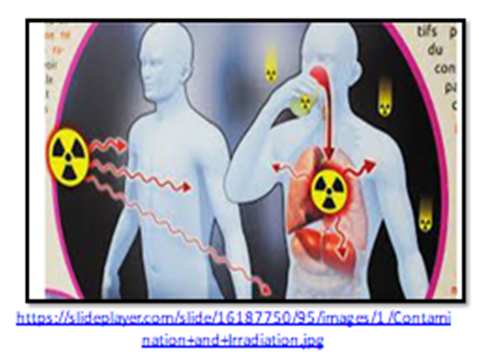- Teacher: أ.د. جمال صقر
- Teacher: أ. فاطمة السيد عوده سليمان الشيمي
A variety of experimental techniques involving wide varieties of nuclear radiation detection methods are required to carry out research in different areas of nuclear physics. The progress in the design and operation of nuclear radiation detectors in various applications has been very rapid and a periodic review in this field is always appropriate. The present report, while dealing with the general principles of particle and radiation detection using conventional detectors of gas, scintillator and semiconductor types, also gives an update of the recent developments in sophisticated detector systems which are built to meet the requirements of present day nuclear physics experiments.
- Teacher: أ.م.د. أحمد محمد إسماعيل
- Teacher: Sayed Badr
- Teacher: أ. اسلام سلامة سعد سلامة

This highly regarded text provides an up-to-date and comprehensive introduction
to modern particle physics.
Extensively rewritten and updated, this fourth edition includes all the recent
developments in elementary particle physics, as well as its connections with cosmology and astrophysics. As in previous editions, the balance between experiment
and theory is continually emphasised. The stress is on the phenomenological
approach and basic theoretical concepts rather than rigorous mathematical detail.
Short descriptions are given of some of the key experiments in the field, and how
they have influenced our thinking. Although most of the material is presented
in the context of the Standard Model of quarks and leptons, the shortcomings of
this model and new physics beyond its compass (such as supersymmetry, neutrino
mass and oscillations, GUTs and superstrings) are also discussed. The text includes
many problems and a detailed and annotated further reading list.
This is a text suitable for final-year physics undergraduates and graduate students
studying experimental or theoretical particle physics.
DONALD H. PERKINS is Emeritus Professor of Physics in Oxford University.
After receiving his first degree and Ph.D. at Imperial College, University of
London, he joined Bristol University as G.A. Wills Research Associate, later
becoming Lecturer and then Reader in physics. He spent the year 1955-6 and
part of 1961 at the Lawrence Radiation Laboratory, University of California, and
in 1966 became Professor of Elementary Particle Physics at Oxford. He is a Fellow
of the Royal Society of London and his awards include the Guthrie Medal of the
Institute of Physics, the Holweck Medal of the Societe Francaise de Physique
and the Royal Medal of the Royal Society. His early experimental research was
in studies of high energy cosmic rays. Later he moved to the field of neutrino
physics, where he was involved in the discovery and early studies of neutral weak
currents, the quark substructure of nucleons and interquark interactions (quantum
chromodynarnics), using accelerator neutrino beams. Professor Perkins has served
on the UK Science and Engineering Research Council, as a member and chairman
of the CERN Scientific Policy Committee and as UK delegate to the CERN
Council. He is an author of Study of Elementary Particles by the Photographic
Method (with C.F. Powell and P.H. Fowler).
to modern particle physics.
Extensively rewritten and updated, this fourth edition includes all the recent
developments in elementary particle physics, as well as its connections with cosmology and astrophysics. As in previous editions, the balance between experiment
and theory is continually emphasised. The stress is on the phenomenological
approach and basic theoretical concepts rather than rigorous mathematical detail.
Short descriptions are given of some of the key experiments in the field, and how
they have influenced our thinking. Although most of the material is presented
in the context of the Standard Model of quarks and leptons, the shortcomings of
this model and new physics beyond its compass (such as supersymmetry, neutrino
mass and oscillations, GUTs and superstrings) are also discussed. The text includes
many problems and a detailed and annotated further reading list.
This is a text suitable for final-year physics undergraduates and graduate students
studying experimental or theoretical particle physics.
DONALD H. PERKINS is Emeritus Professor of Physics in Oxford University.
After receiving his first degree and Ph.D. at Imperial College, University of
London, he joined Bristol University as G.A. Wills Research Associate, later
becoming Lecturer and then Reader in physics. He spent the year 1955-6 and
part of 1961 at the Lawrence Radiation Laboratory, University of California, and
in 1966 became Professor of Elementary Particle Physics at Oxford. He is a Fellow
of the Royal Society of London and his awards include the Guthrie Medal of the
Institute of Physics, the Holweck Medal of the Societe Francaise de Physique
and the Royal Medal of the Royal Society. His early experimental research was
in studies of high energy cosmic rays. Later he moved to the field of neutrino
physics, where he was involved in the discovery and early studies of neutral weak
currents, the quark substructure of nucleons and interquark interactions (quantum
chromodynarnics), using accelerator neutrino beams. Professor Perkins has served
on the UK Science and Engineering Research Council, as a member and chairman
of the CERN Scientific Policy Committee and as UK delegate to the CERN
Council. He is an author of Study of Elementary Particles by the Photographic
Method (with C.F. Powell and P.H. Fowler).
- Teacher: أ. انجي هاني علي
- Teacher: أ.د. محمد أبو ليلة
- Teacher: د. محمد احمد على أبو ليلة
- Teacher: أ. ندا بهاء الدين



